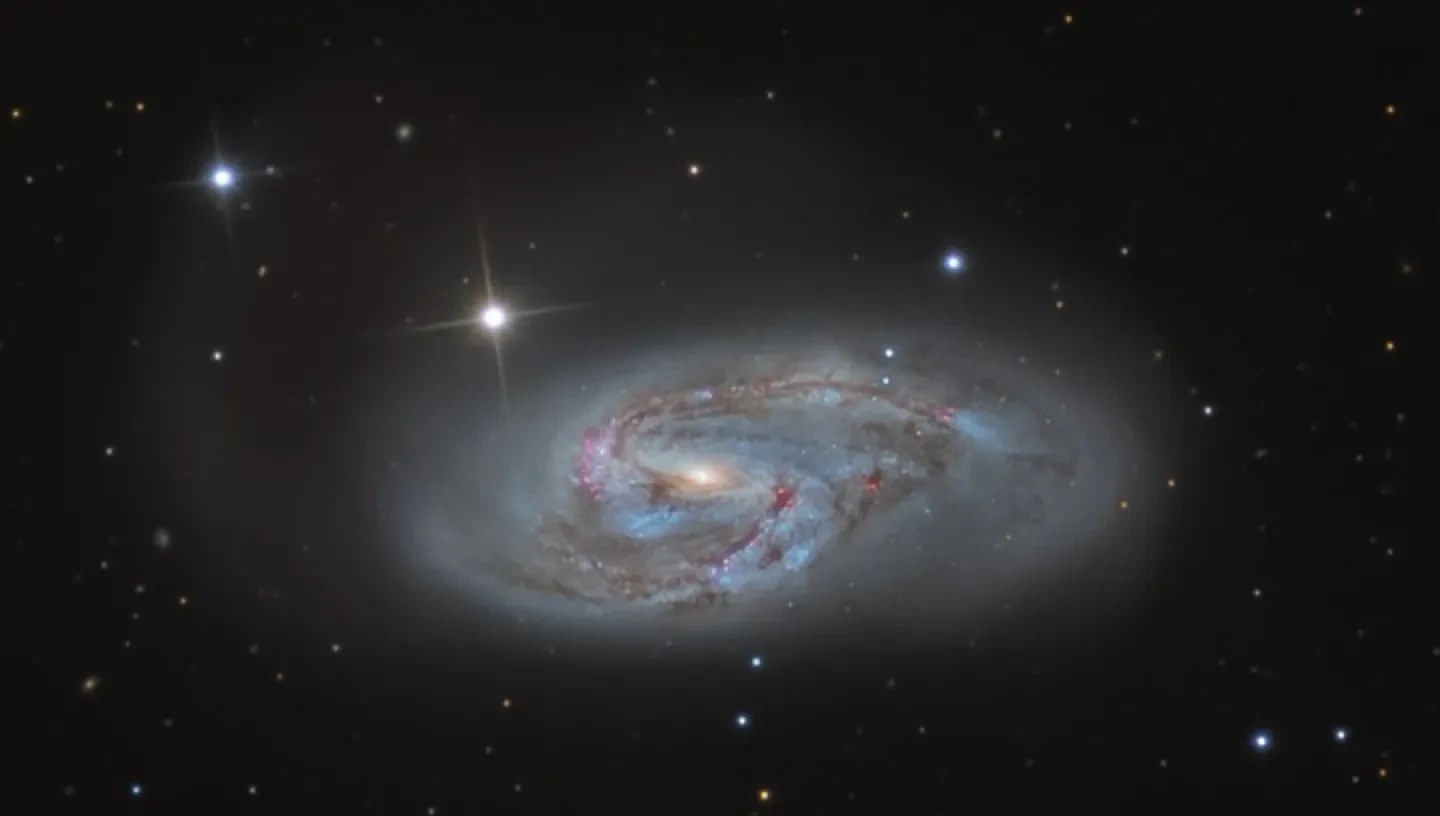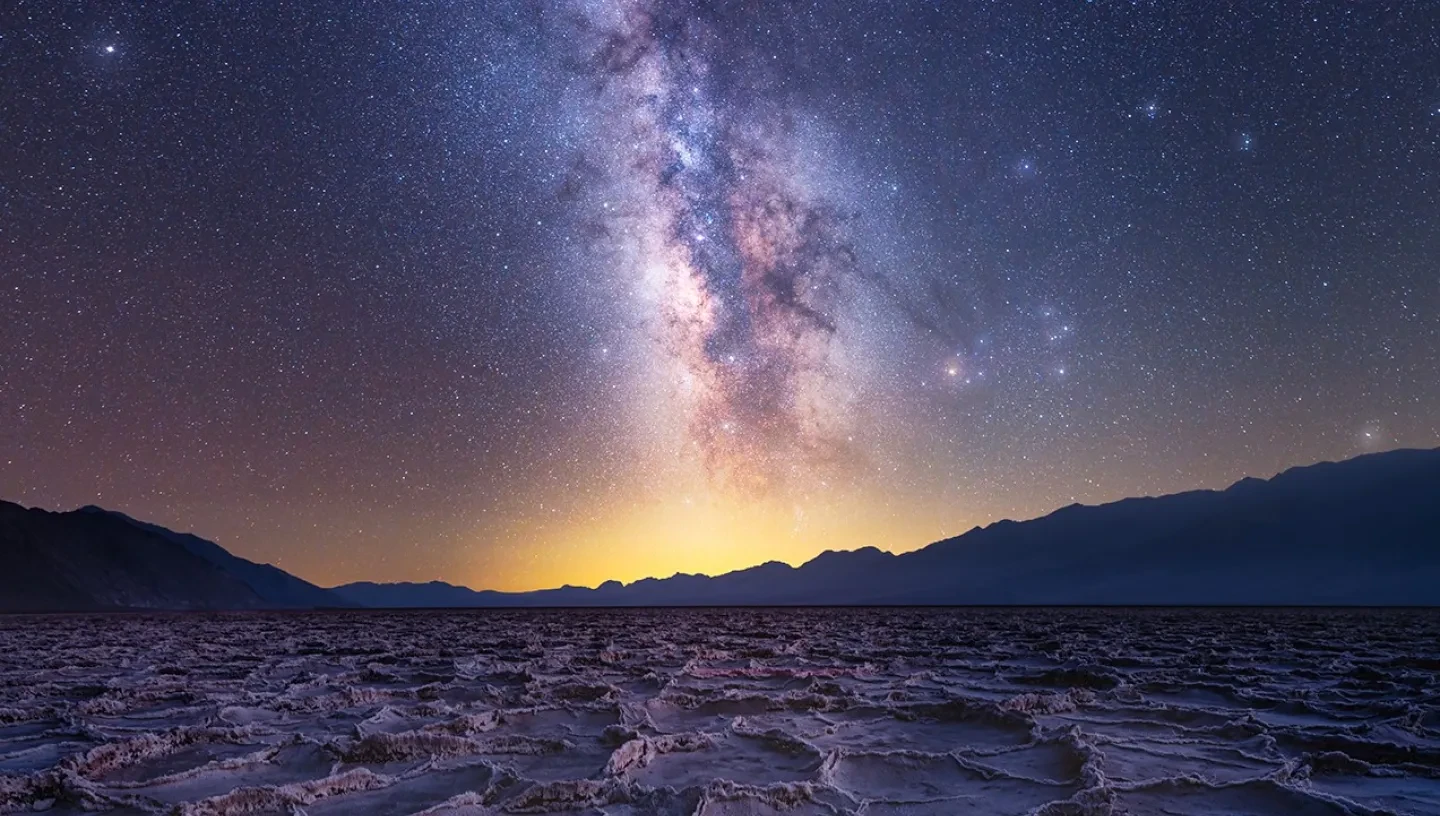
The unimaginably large Sun is just one of 200,000,000,000 stars that make up our Galaxy (itself one of many).
Unfortunately those of us who live in the northern hemisphere cannot see the two closest galaxies, called the Magellanic Clouds, which are rather like two satellite galaxies to the Milky Way.
In the northern sky we can see two galaxies with the naked eye. The Andromeda galaxy, M31, is a faint fuzzy patch that appears, with binoculars, as a lens-shaped object. It is a galaxy rather like ours at a distance of about 2 million light years. It has two dwarf elliptical satellites, which can be seen with a small telescope.
The other galaxy (M33 in Triangulum) is much harder to see although it is at a similar distance to the Andromeda galaxy.
The Milky Way system
On a dark night we can often see a band of light stretching across the sky. This band we call the Milky Way and it is composed of a band of stars most of which are too faint to be picked out so that we see their combined light as a faint glow.
This band is the plane of the disk of our Galaxy. The Sun is one, rather faint, example of approximately 200,000,000,000 stars that make up our Galaxy. These stars are mostly grouped into a flattened disk which has a bulge at its centre. The Sun is in this disk about two thirds of the way from its centre to its edge. When we look at the night sky we see the Milky Way when we look along the plane of this disk whereas when we look in other directions, out of the plane, we see far fewer stars.
The size of our Galaxy is huge; light would take about 100,000 years to cross the Galaxy.
Spiral galaxies
Our Galaxy has arms of younger stars and gas that appear to spiral out from the centre. In fact the objects in these spiral arms are in almost circular orbits about the centre of the Galaxy. The Sun takes about 200 million years to complete one orbit around the centre. About 30 percent of all galaxies have spiral arms.
Spiral galaxies are rich in gas and dust. Some are viewed face-on so that the spiral arms are easily seen whereas others are viewed edge-on.
Elliptical galaxies
The majority of galaxies show no spiral features, nor are they flattened disks; they take the form of ellipsoids. They show only small evidence for young stars, dust or gas. They are very different in size ranging from giant ellipticals with masses of about 1 million million times that of the Sun to dwarf ellipticals with masses closer to those of the globular clusters.
Irregular galaxies
Some galaxies are neither ellipsoidal nor are they spirals. Some of these are obviously objects which have been tidally distorted by the presence of another nearby galaxy but there are some, such as the Magellanic Clouds, which have little symmetry to their structure.
Active galaxies
Some galaxies show evidence of the generation of enormous amounts of energy from the vicinity of their nucleus. These are often strong radio emitters. Other galaxies have such energetic nuclei that we only see the bright nucleus and not the underlying galaxy; we call these objects quasars (quasi-stellar objects).
The presence of black holes at the centres of these objects is thought necessary by many astronomers to explain their nature. Because they are the brightest objects known in the universe it is not surprising that quasars are the objects that have been traced out furthest from us. The furthest known are so far away that the light we see coming from them must have originated when the Universe was only one tenth of its present age.
How many stars and galaxies in the universe?
The best estimates suggest that there are at least 70 thousand million million million (70 sextillion or 7 × 1022) stars in the Universe. The Universe probably contains more than 100 thousand million (100 billion or 1011) galaxies.


